
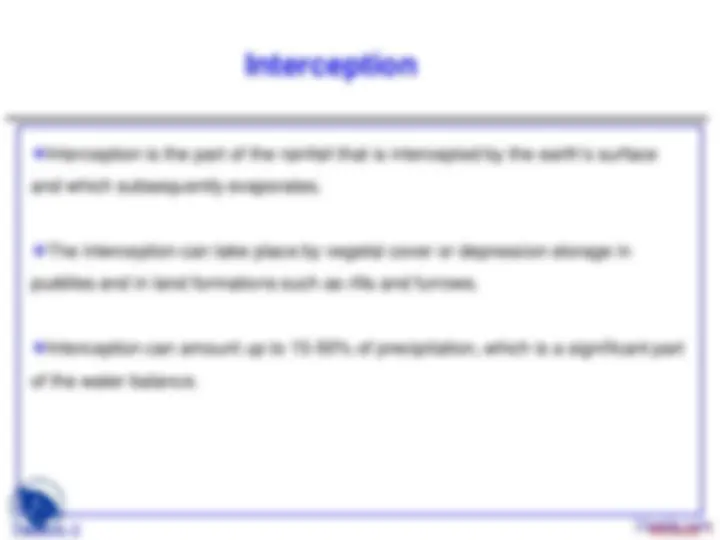
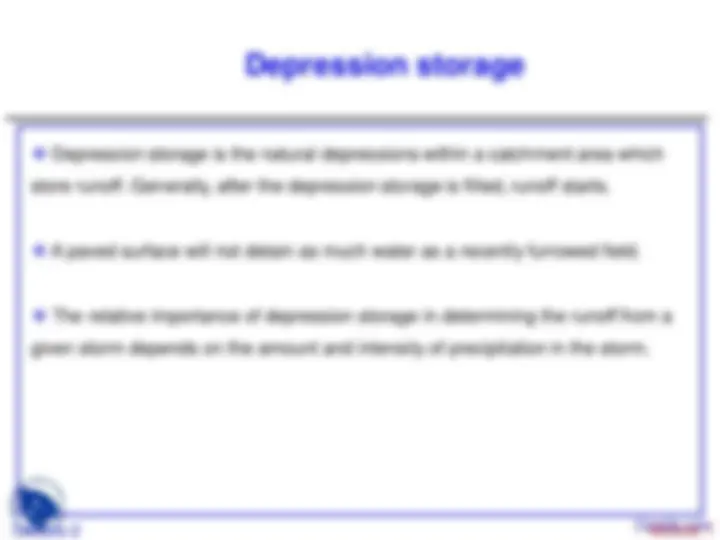

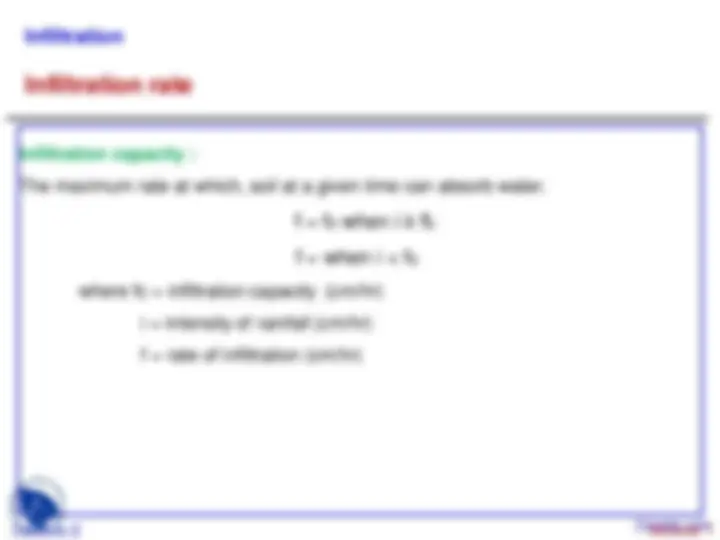
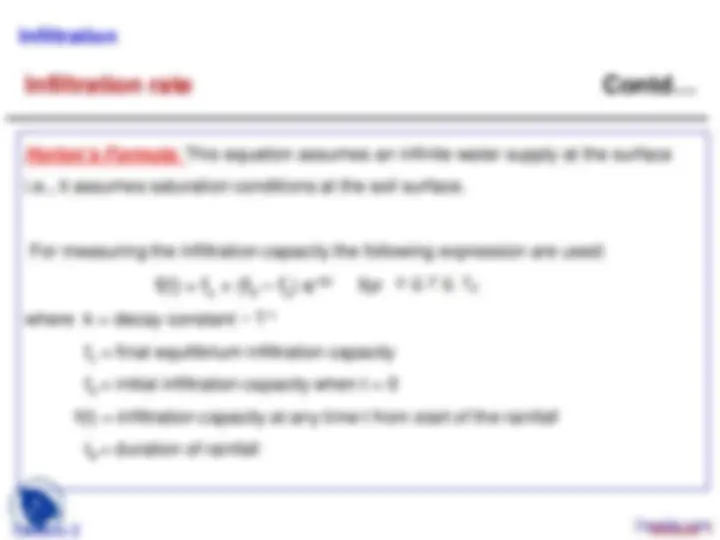
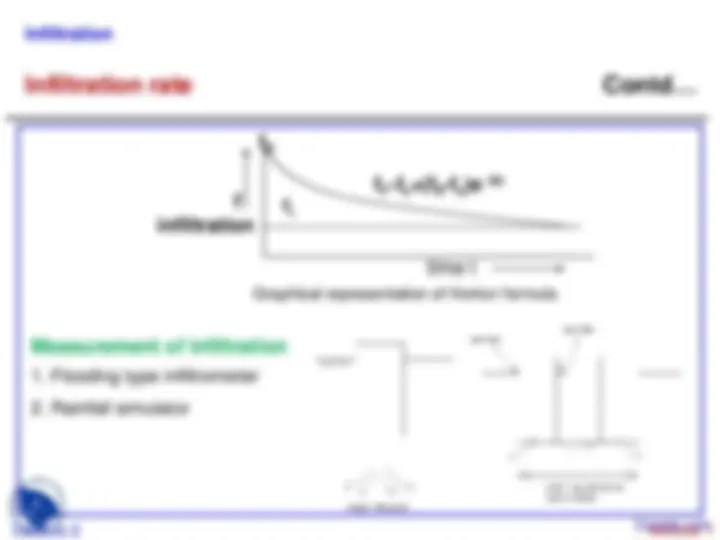
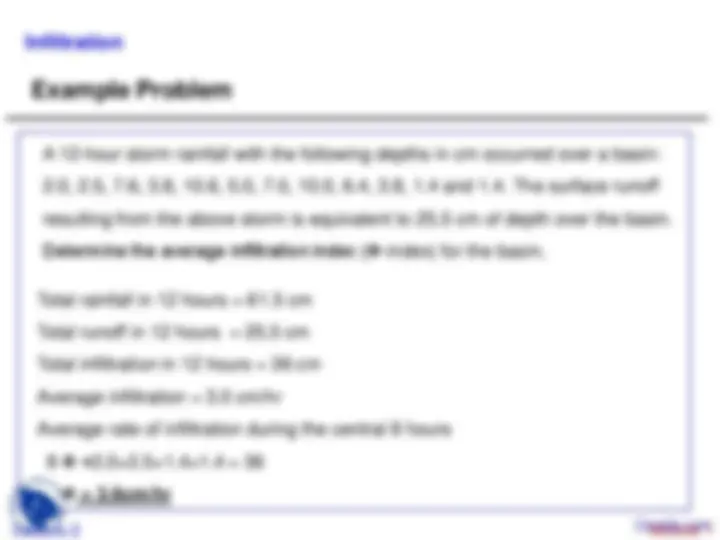
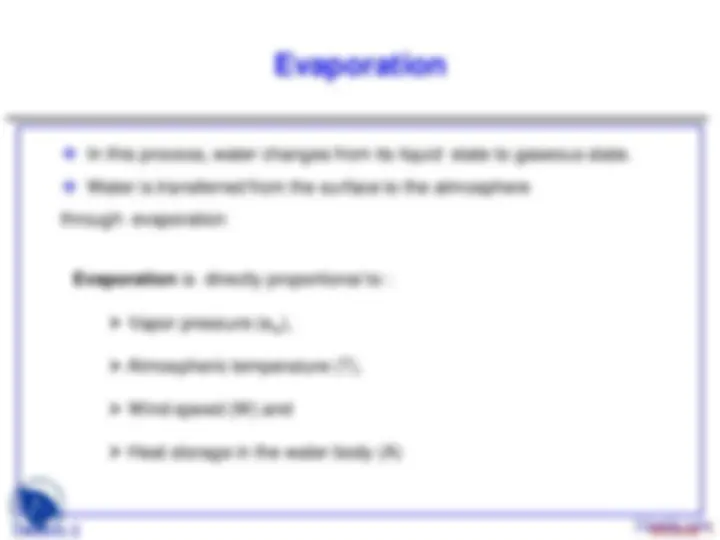
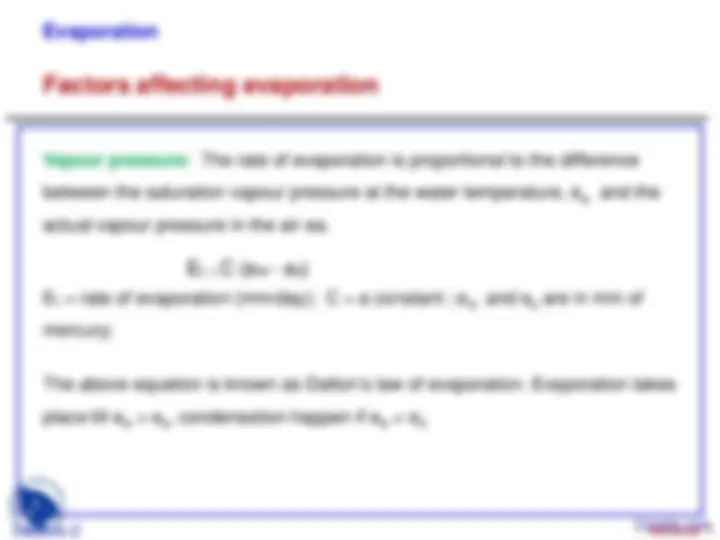

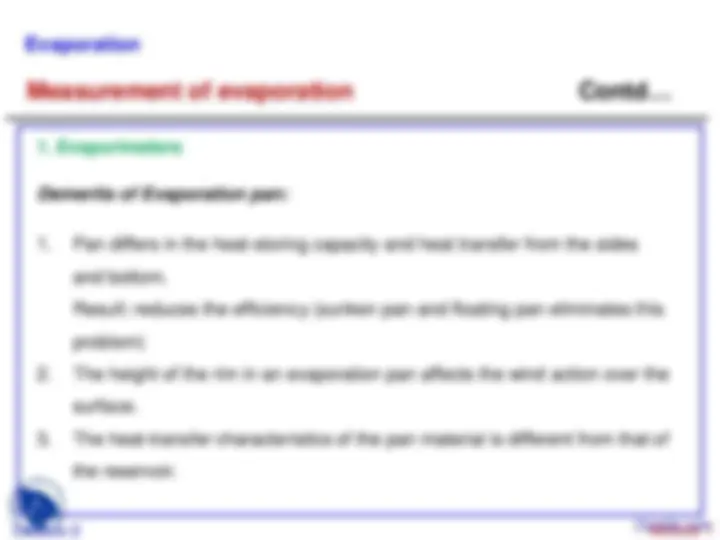
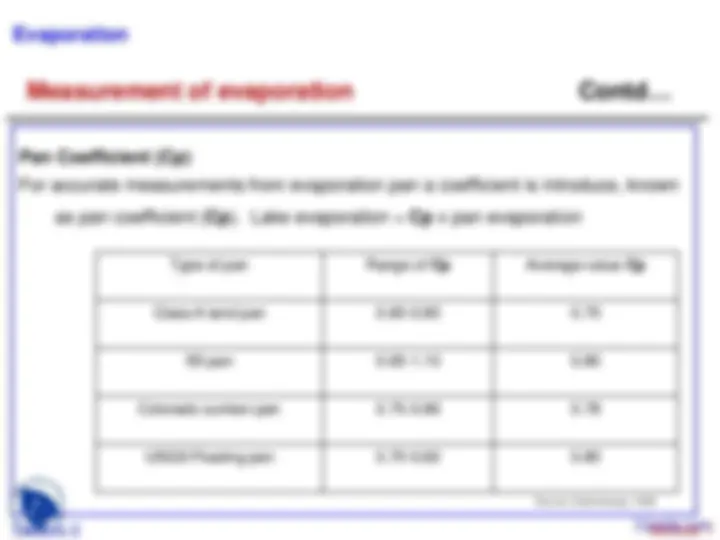
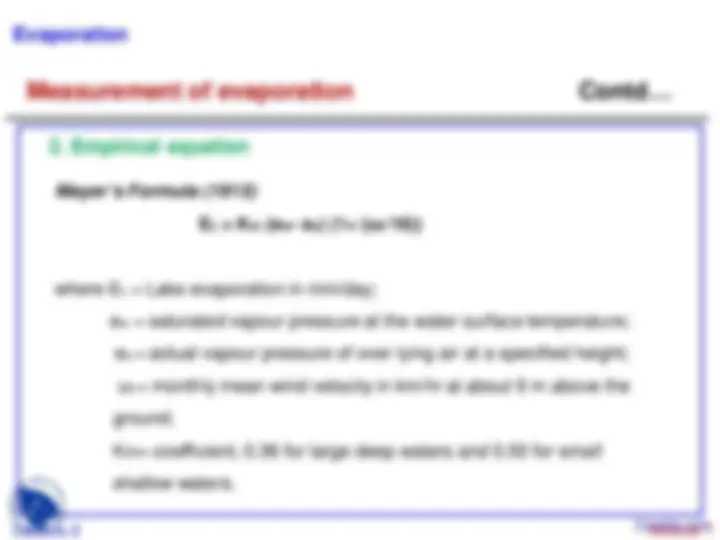
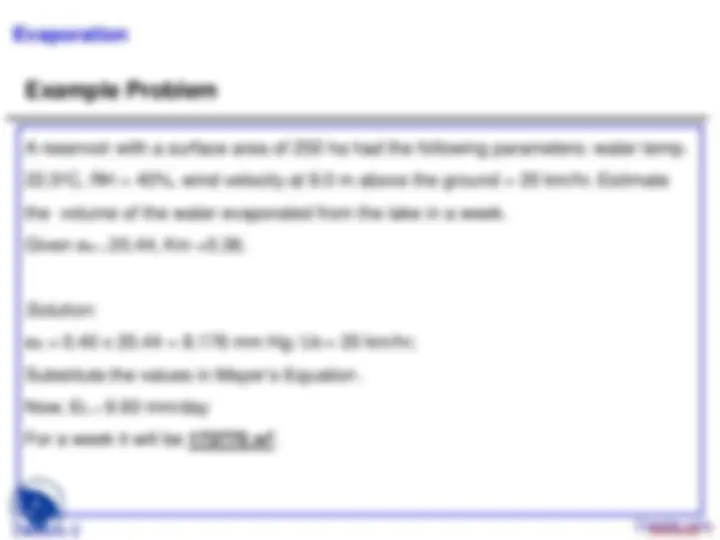
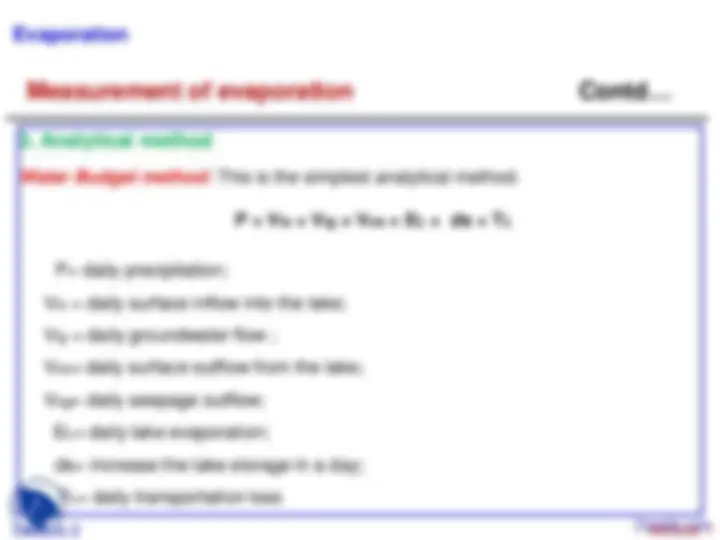
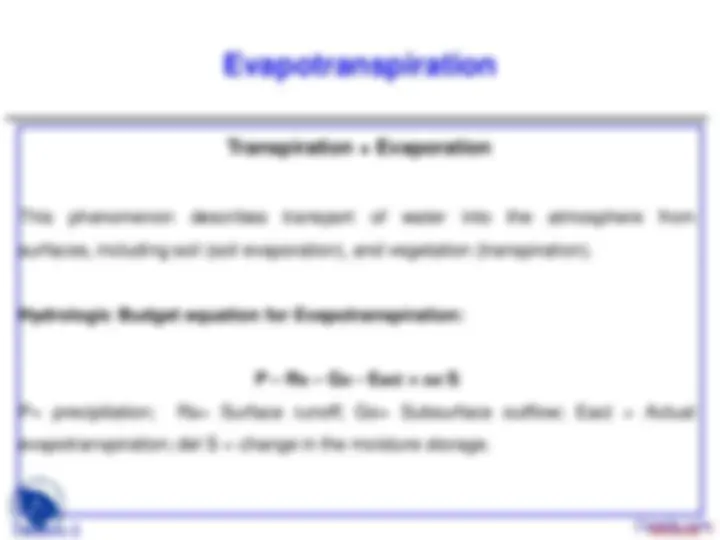

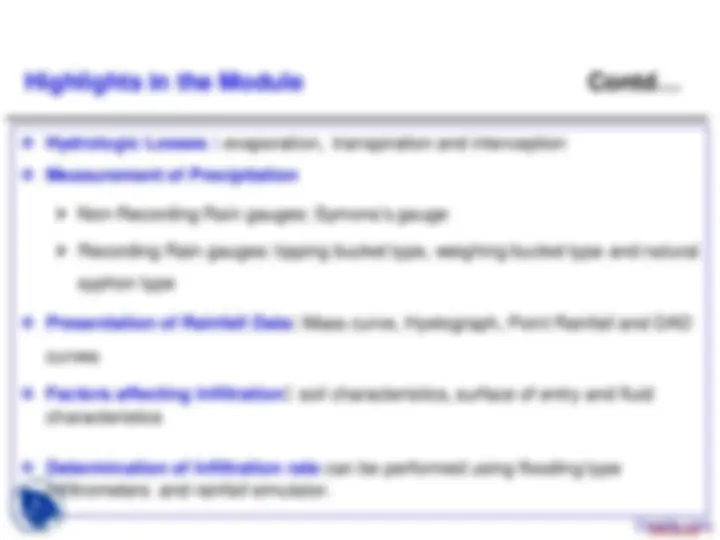
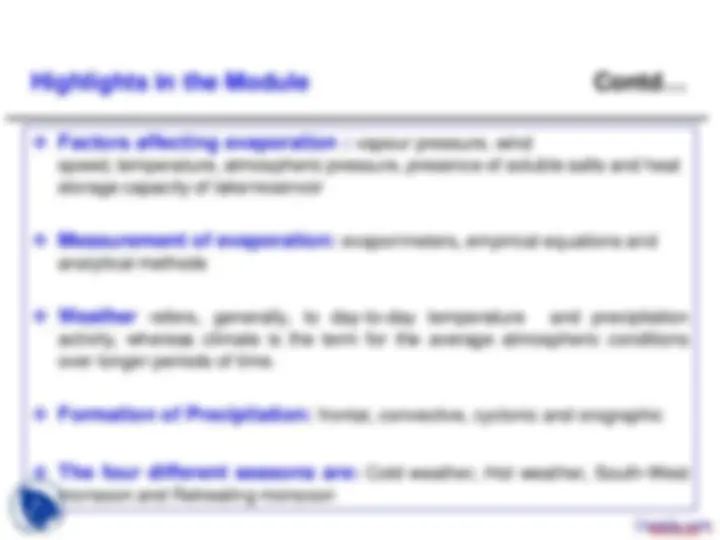


Study with the several resources on Docsity

Earn points by helping other students or get them with a premium plan


Prepare for your exams
Study with the several resources on Docsity

Earn points to download
Earn points by helping other students or get them with a premium plan
Community
Ask the community for help and clear up your study doubts
Discover the best universities in your country according to Docsity users
Free resources
Download our free guides on studying techniques, anxiety management strategies, and thesis advice from Docsity tutors
These are the Lecture Slides of Advanced Hydrology which includes Method of Matching Points, Method of Moments, Maximum Likelihood Method, Population Parameter, Sample Parameter, Estimation etc.Key important points are: Hydrologic Losses, Engineering Hydrology, Treated, Transpiration Phases, Interception, Depression Storage, Infiltration
Typology: Slides
1 / 27

This page cannot be seen from the preview
Don't miss anything!




















Docsity.com
In engineering hydrology, runoff is the main area of interest. So, evaporation and transpiration phases are treated as “losses”.
If precipitation not available for surface runoff is considered as “loss”, then the following processes are also “losses”: Interception Depression storage Infiltration
In terms of groundwater, infiltration process is a “gain”.
Lecture 2 Docsity.com^ Module 1
Depression storage is the natural depressions within a catchment area which store runoff. Generally, after the depression storage is filled, runoff starts.
A paved surface will not detain as much water as a recently furrowed field.
The relative importance of depression storage in determining the runoff from a given storm depends on the amount and intensity of precipitation in the storm.
Lecture 2 Docsity.com^ Module 1
The process by which water on the ground surface enters the soil. The rate of infiltration is affected by soil characteristics including ease of entry, storage capacity, and transmission rate through the soil.
The soil texture and structure, vegetation types and cover, water content of the soli, soil temperature, and rainfall intensity all play a role in controlling infiltration rate and capacity.
Lecture 2 Docsity.com^ Module 1
Soil Type : Sand with high porosity will have greater infiltration than clay soil with low porosity.
Surface of Entry : If soil pores are already filled with water, capacity of the soil to infiltrate will greatly reduce. Also, if the surface is covered by leaves or impervious materials like plastic, cement then seepage of water will be blocked.
Fluid Characteristics : Water with high turbidity or suspended solids will face resistance during infiltration as the pores of the soil may be blocked by the dissolved solids. Increase in temperature can influence viscosity of water which will again impact on the movement of water through the surface.
Module 1
Factors affecting infiltration Contd…
Lecture 2 Docsity.com
Infiltration capacity : The maximum rate at which, soil at a given time can absorb water.
where fc = infiltration capacity (cm/hr) i = intensity of rainfall (cm/hr) f = rate of infiltration (cm/hr)
Module 1
Infiltration rate
Lecture 2 Docsity.com
Infiltration
Graphical representation of Horton formula
Module 1
Infiltration rate Contd…
Lecture 2 Docsity.com
Infiltration
The average value of infiltration is called infiltration index.
Two types of infiltration indices
Module 1
Measurement of infiltration
Lecture 2 Docsity.com
Example Problem
A 12-hour storm rainfall with the following depths in cm occurred over a basin: 2.0, 2.5, 7.6, 3.8, 10.6, 5.0, 7.0, 10.0, 6.4, 3.8, 1.4 and 1.4. The surface runoff resulting from the above storm is equivalent to 25.5 cm of depth over the basin. Determine the average infiltration index (Φ-index) for the basin.
Total rainfall in 12 hours = 61.5 cm Total runoff in 12 hours = 25.5 cm Total infiltration in 12 hours = 36 cm Average infiltration = 3.0 cm/hr Average rate of infiltration during the central 8 hours 8 Φ +2.0+2.5+1.4+1.4 = 36 Φ = 3.6cm/hr
Lecture 2 Docsity.com^ Module 1
In this process, water changes from its liquid state to gaseous state. Water is transferred from the surface to the atmosphere through evaporation
Evaporation is directly proportional to : Vapor pressure (e (^) w), Atmospheric temperature (T), Wind speed (W) and Heat storage in the water body (A)
Lecture 2 Docsity.com^ Module 1
Temperature: The rate of evaporation increase if the water temperature is increased. The rate of evaporation also increase with the air temperature.
Heat Storage in water body: Deep bodies can store more heat energy than shallow water bodies. Which causes more evaporation in winter than summer for deep lakes.
Module 1
Factors affecting evaporation Contd…
Lecture 2 Docsity.com
Soil evaporation: Evaporation from water stored in the pores of the soil i.e., soil moisture.
Canopy evaporation: Evaporation from tree canopy.
Total evaporation from a catchment or an area is the summation of both soil and canopy evaporation.
Module 1
Types of Evaporation
Lecture 2 Docsity.com
Demerits of Evaporation pan:
Module 1
Measurement of evaporation Contd…
1. Evaporimeters
Lecture 2 Docsity.com
Pan Coefficient (Cp) For accurate measurements from evaporation pan a coefficient is introduce, known as pan coefficient ( Cp ). Lake evaporation = Cp x pan evaporation Type of pan Range of Cp Average value Cp Class A land pan 0.60-0.80 0. ISI pan 0.65-1.10 0. Colorado sunken pan 0.75-0.86 0. USGS Floating pan 0.70-0.82 0. Source: Subramanya, 1994 Module 1
Measurement of evaporation Contd…
Lecture 2 Docsity.com